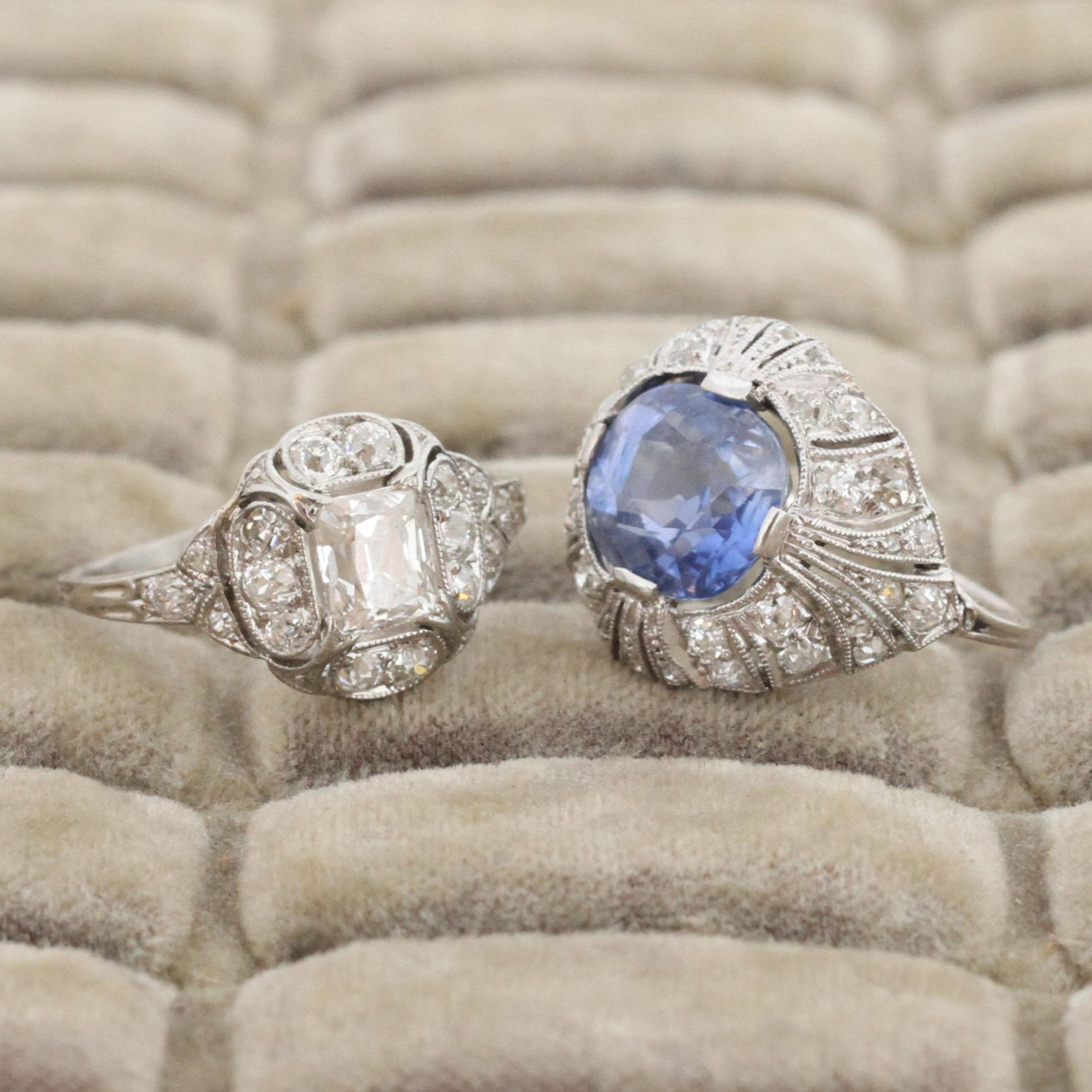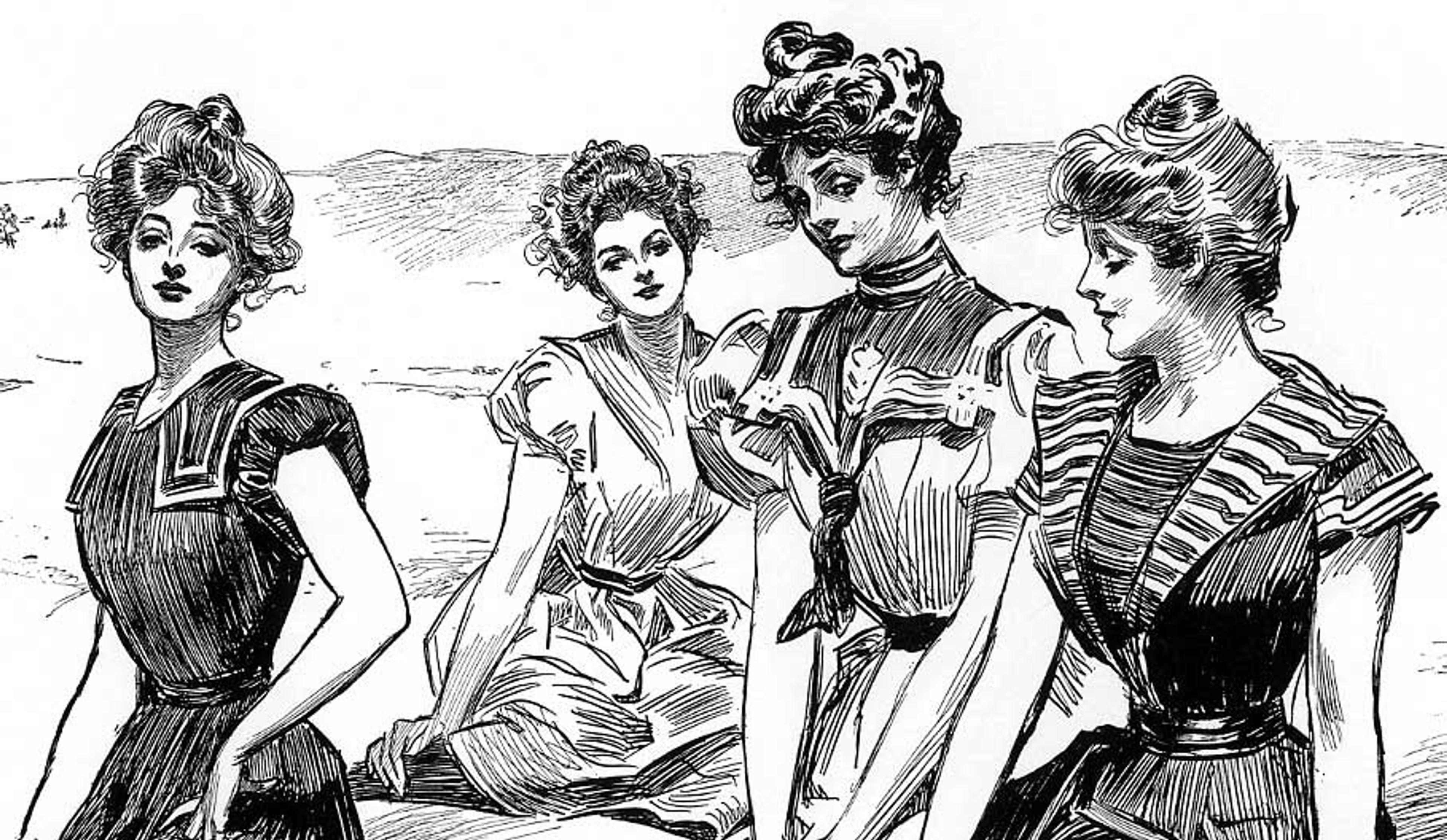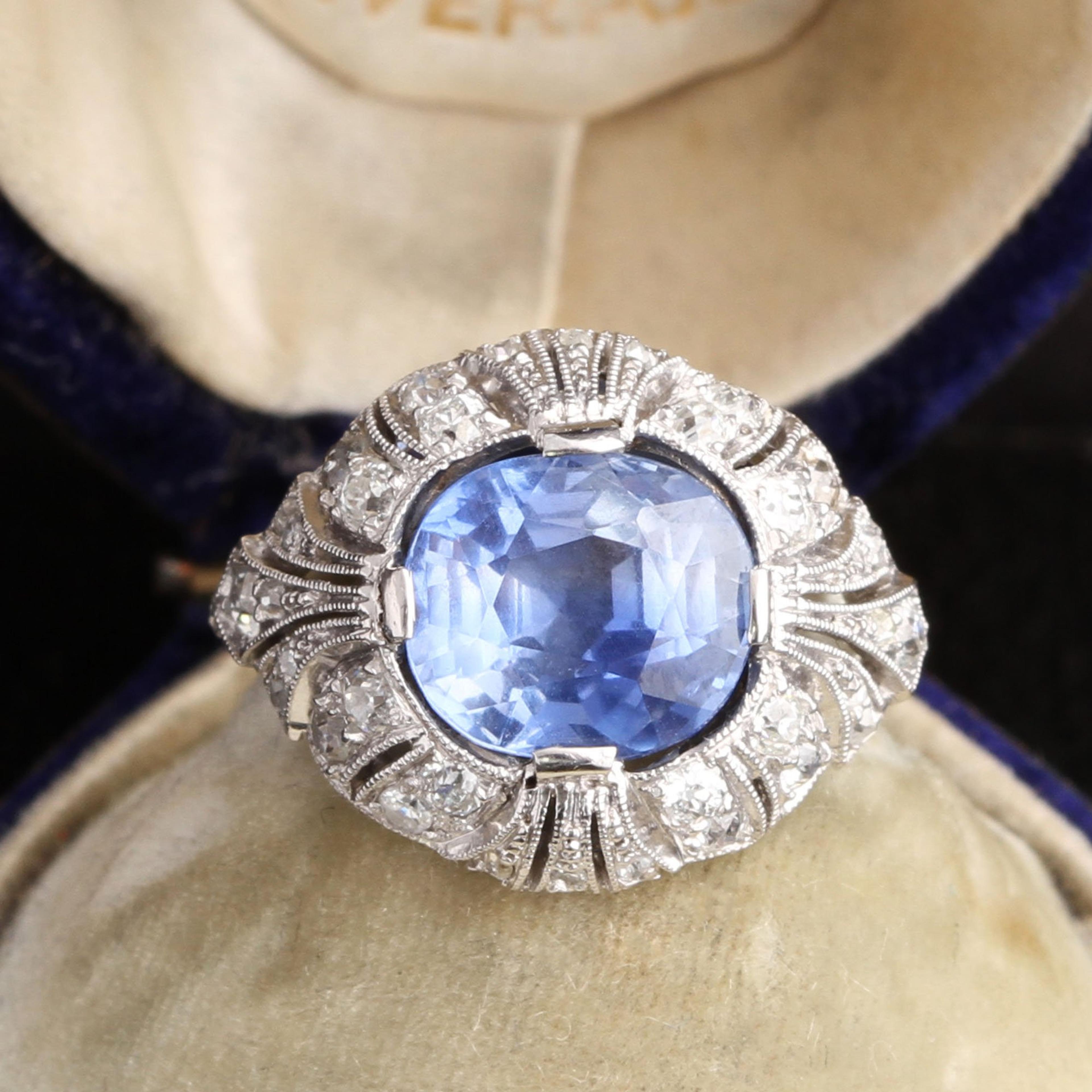This exquisite ring was fashioned at the height of the Edwardian period. The masterfully crafted mounting is made in platinum and contains wonderfully rendered decoration: intricate engraving, filigree work, feminine ribbon motifs, a generous sprinkling of fine milgrain and 1.10ctw of old mine cut diamonds. A regal 4.25ct cushion cut periwinkle blue sapphire dazzles in the ring's central setting. This richly saturated, beautifully faceted blue stone hails from Sri Lanka (not so long ago known as the colonial Ceylon). Since at least 500 B.C., the sapphires from this area have been regarded as among the finest in the world. Sapphires are associated with truth and faithfulness, and therefore make a wonderful alternative to the traditional diamond engagement ring. Comes with a GIA certificate for the sapphire.
thedetails
- Materials
Platinum, 4.25ct Ceylon sapphire, 1.10ctw old mine cut diamonds
- Age
c. 1920
- Condition
Excellent
- Size
4.75, can be resized; 1.53cm head, .9mm hoop
Need more photos?
Send us an email to request photos of this piece on a model.


Aboutthe
EdwardianEra
1900 — 1910
The jewelry tended toward airy lightness, often in the form of lacy filigree. The world was changing rapidly, but lots of the jewelry still reflected the Victorian ideals of decorum and femininity. Ancient Roman and Greek influences remained popular. “White” jewelry became popular as plentiful deposits of platinum were discovered in Russia and improved smelting technology made it possible for jewelers to work in the noble metal. Platinum was seldom used by jewelers in earlier years owing both to its scarcity and high melting point. The jewelry trade took advantage of its rigid strength to create opulent openwork settings for increasingly brilliant diamonds. The old European cut was perfected, rounder and squatter than old mine. This took stone-cutting one step closer to the mathematically perfect round brilliant cut, which is the most popular diamond cut today. The now-iconic square Asscher cut was patented in 1902. Hot on the heels of platinum, the alloy mixture that produces white gold was formulated and patented in 1915 in New York City. With Europe in the grip of WW1, the American jewelry industry was poised to become a world leader and innovator.
